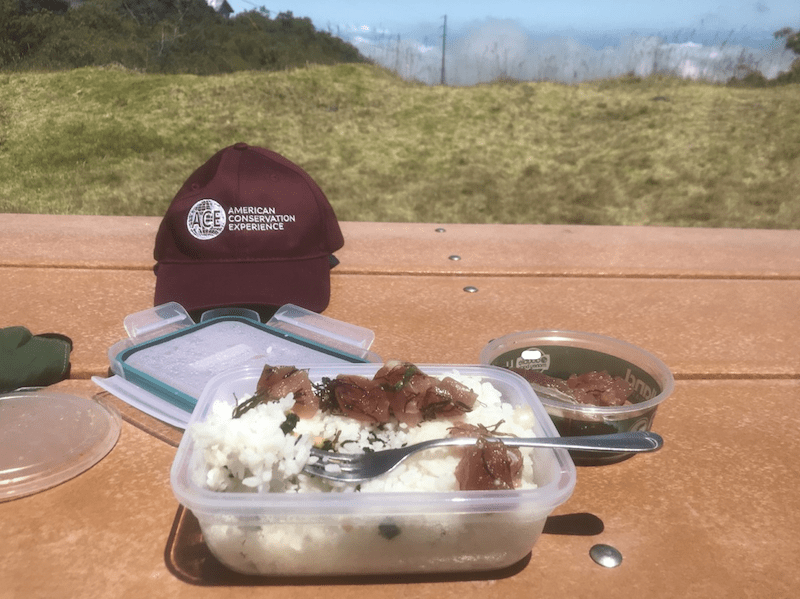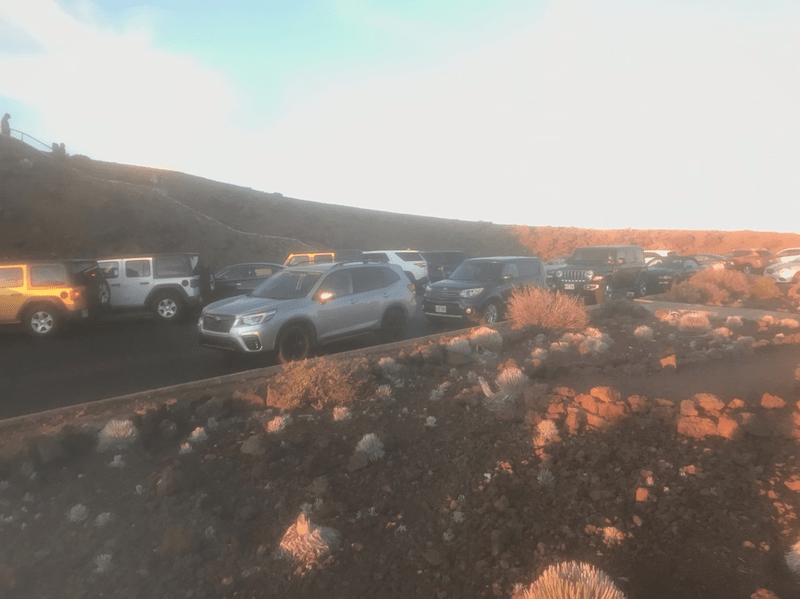Adapting Operations at Haleakalā National Park
Written by: Jacob Hakim
Since this is my second year working as a CRDIP intern at Haleakalā National Park on the island of Maui, Hawaiʻi, I showed up on my first day with certain expectations about what the job would be. I had a nice, quiet (albeit slightly truncated) summer living in park housing and working with the interpretive rangers of the park. I would drive up from my lodging to the summit for sunrise a few days a week, and the rest of the time I would telework from home, researching and writing for my 19th Amendment Centennial project. I’d meet a few folks at the summit, rove down the mountain at a leisurely pace, and sometimes (rarely!) answer phones. Limited travel to the Hawaiian islands meant that the only people in the park were Maui residents, and most of the time, the park was quiet and empty.
This year, of course, everything is different.
From my first day up at the park, it was easy to see how atypical my experience from 2020 had been. (What, if anything, was typical about last year?) The summit (the Hawaiian name is Puʻu ʻulaʻula, or ‘red hill’) was fully packed with cars, and the parking lot at the lower Haleakalā Visitor Center had quite a few too. There were also commercial tour vans, which had been conspicuously absent for the majority of 2020. As I spent my first few shifts working in the office, I learned from the park rangers, as well as visitors, that sunrise reservations sold out daily, often within seconds (seconds!) of being released. Sunrise in the park is extremely popular among visitors and residents alike, and since the park reopened its operations to 24 hours, and since the islands opened up to domestic travel, the tickets have been selling out instantly.
On top of that, my first day marked a significant development for park operations: the opening of reservations for camping at the park’s frontcountry campground, Hosmer Grove. Park visitors had been waiting anxiously for this campground to open up, since its proximity to the park entrance and location next to a parking lot makes it by far the most accessible campground in the park. (The other two campgrounds are in the backcountry Wilderness Area, miles from any pavement.) In addition, the campground would be changing from first-come-first-served to a Recreation.gov reservation system for the first time. So, on June 1st, my first day on the job, the interpretive team were scrambling to answer visitor questions and concerns, which were coming in by the dozens via phone and email. I did my best to answer some of those calls, using the freshly printed Hosmer Grove campground FAQs that were lying around the office.

After that first day, things calmed down, though there were many new issues that the team had to deal with, since the campground reservation system is new to everyone. However, things weren’t quiet for long: a few weeks later, the park suddenly increased its number of available sunrise reservations, which meant that from one day to the next the number of vehicles entering the park at sunrise would be increasing significantly. So, the team had to adjust its operations again, and everyone spent most of a day discussing and planning for the following morning.
I wasn’t at that meeting, because it was my day off, but I was one of the two people who was scheduled to work the next morning.
When I arrived at the park, there was a long line at the entrance station – something I’d never seen before at 4:40 AM. It took more than twenty minutes to get into the park, and I was late. I met the other ranger I was working with and we drove up to the summit as soon as we could. We didn’t make it up by sunrise, and when we got to the summit to close the gate, it was already too late. The summit parking lot was overcrowded, and there were a handful of cars illegally parked. But by the next sunrise shift, we arrived to the park early enough to get through the gate on time, and were able to close the gate to the summit parking area before the sun was up.

Though things might seem chaotic, the interpretive rangers here have been facing these new challenges with patience, flexibility and perseverance. With every new change in operations, there are new challenges, many of which are unexpected, but there are also victories. Increased capacity means more visitors and more crowded parking lots, but it also means we get to interact with more visitors and teach them about the park’s history and resources. The team I work with is mindful in every visitor interaction and communicative when problems arise, and I am lucky to work with a team whose members are paragons of adaptability. It is those people – the rangers, volunteers and interns from all divisions – who keep the park running and keep the visitors and park wildlife safe.
